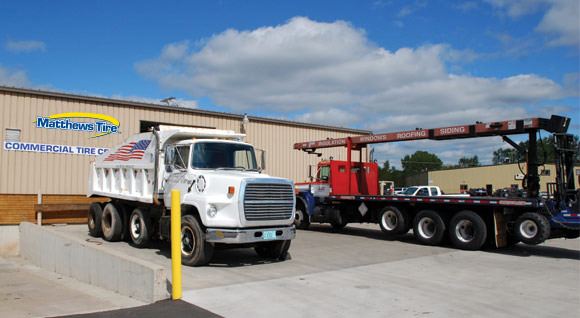If you want your car to stay in the best condition through every season, maintaining your car’s engine is essential. One often overlooked aspect of car maintenance is the radiator flush. Regularly flushing your car’s radiator can help prevent damage to your engine and improve its performance.
In this blog, we’ll cover the benefits of a radiator flush and hear from Matthews Tire Waupaca Manager Nathan Ernst on the signs to look out for that indicate your car is in need of a flush. So, buckle up and let’s roll into the world of radiator flushes!
What is a Radiator Flush?
Radiators use a mixture of water and coolant to release heat buildup and send cool air throughout your car’s engine. This liquid can become dirty and even turn to sludge if not flushed regularly.
For newer vehicles, regular radiator flushes are even more important. Built with high-energy systems and engines with multiple metals, radiator fluid can become corrosive much faster than in older cars.
A radiator flush removes the old coolant from your radiator and replaces it with fresh, clean coolant that will perform better.
Matthews Tire radiator flush process
When you bring your car in for a radiator flush, our technicians first connect a fluid-exchange machine to the radiator hoses on your vehicle.
While the machine is running, the thermostat on the vehicle opens and closes, replacing the old, dirty fluid with the new coolant. Then you’re good to go!
Our radiator flush services are quick, simple and keep your car running in great shape through all the Wisconsin seasons.
Why get a Radiator Flush?
According to Nate, there are several advantages to having a radiator flush performed on your car.
Top benefits of getting regular radiator flushes for your vehicle:
Raise the frost level of your coolant
“Getting a radiator flush raises the frost level of the engine coolant to near -35 degrees,” Nate said. He added that, for Wisconsin drivers, “this is a huge advantage while driving in the harsh winter months.”
Improves engine performance
Because radiator flushes help to remove any dirt and debris from the engine, it allows the entire system to perform better. Nate explained that “radiator flushes help the internal engine seals, water pump and thermostat operation.”
Prevents engine leaks
Last but not least, radiator flushes can help prevent leaks from within the engine. “A sealing agent is added,” Nate said, which can save you a lot of money and headaches in the future.
How Often Should You Get a Radiator Flush?
“Most vehicle manufacturers suggest that cooling system services should be performed at 10 years (or 10,000 miles),” Nate shared.
Check your car’s manufacturer guidelines to get the most accurate maintenance schedule and learn when you’ll need to schedule a radiator flush service.
Does Your Car Need a Radiator Flush?
Since radiator flushes don’t need to be performed as often as other common routine car maintenance, it can be difficult to know when it’s time for a flush.
To ensure you’re aware of any changes in your radiator that need to be addressed, Nate recommends regularly checking the levels. “Check your coolant levels at your oil change intervals to tell if it has sludge, grime or buildup inside the reservoir or radiator cap.” This means it’s time to schedule a flush.
Nate also recommends checking your radiator’s frost level sometime in the fall, when temperatures begin to drop. “If the frost level is near zero,” Nate said, “then you’ll need to schedule a flush to keep the coolant from freezing in your engine during the winter.”
Of course, if you’re still not sure whether your car needs a flush or not, the experts at Matthews Tire are here to help!
Schedule Your Radiator Flush Service
Radiator flushes help keep your engine at the proper temperature and your car running smoothly, no matter the weather. If it’s time for your flush, stop into your local Matthews Tire for fast, friendly service you can’t beat.
Schedule your radiator flush today!















